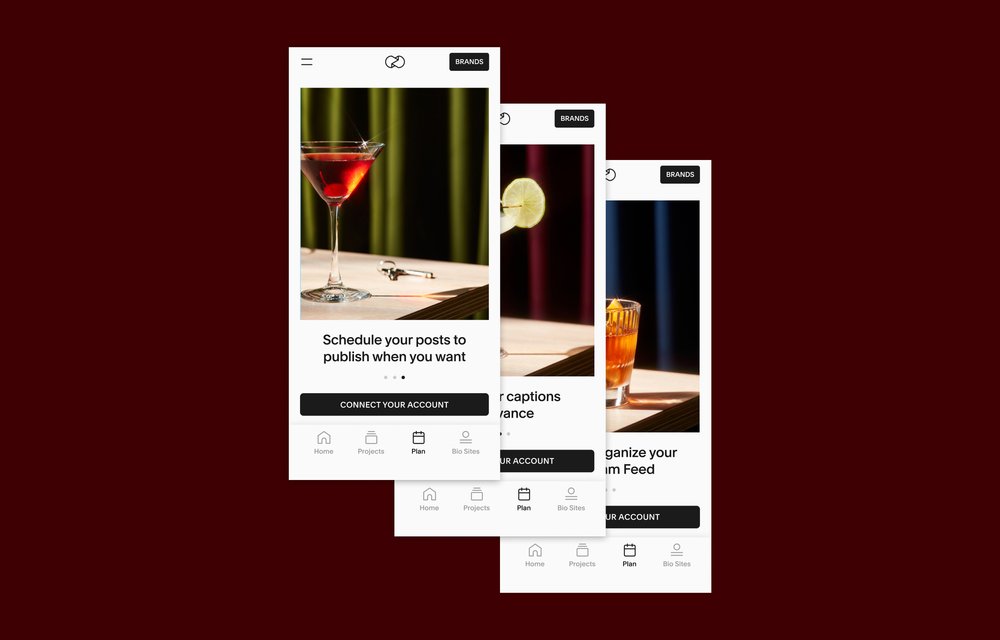A strong social media presence is an important part of growing your brand’s fanbase. In order to turn those fans into active customers, you need to guide them toward your website where they can explore your products or services and—crucially—start purchasing your products or services. Get started with that process by learning how to develop a content creation process for your website and blog that’s effective and streamlined.
Developing content clusters
If you’ve carried out comprehensive research, you’ll know exactly where to find your target audience on social media. Now, you need to get them to engage with your brand by regularly serving them high-quality content that entices them to click through to your website.
Producing an ongoing stream of quality content isn’t easy without planning. So, you need to develop a strategy that will minimize the day-to-day stress of creating clickable content to post. This starts with creating what are known as “content clusters.”
Drawn from your target audience research findings, content clusters are themed groups of ideas. They live on your website in the form of pages, and your social media should drive users to those pages.
“Pillar pages” or “hub pages” are pages that cover a topic in its broadest sense. A bookstore might create an “American Literature” hub, for instance. Around that hub will sit a number of different “spoke pages” that represent the target audience’s more niche interests, e.g., “Romantic Literature,” “Modernist Literature,” and “African American Literature.” The deeper you go into each subject by adding spokes to spokes—such as “African American Detective Fiction” as a spoke of “African American Literature”—the more audience-friendly content themes you can generate.
As well as helping you to develop a wealth of targeted content, using content clusters also has a significant positive impact on your search engine optimization (SEO): It’s best to hyperlink each page within the cluster to the other pages. This network of internal links tells the search engines that you are an authority with a depth of knowledge on the pillar subject. That authority improves your ranking, which means that more people will see your website when they search for related keywords.
Creating a content calendar
Once you have enough content themes to roll out over time, you can develop a content calendar in a spreadsheet. A content calendar (also referred to as an editorial calendar) is a schedule that tracks when you intend to publish planned content on your website and when you plan to promote it on your social media. Content calendars help to keep you organized and identify how much time you have to develop all the different types of content that you choose to host on your website and share on your social media channels.
Creating a content calendar doesn’t rule out the possibility of creating some high-quality content spontaneously as well. However, it’s easier to maintain a consistent content rollout when you plan the content in advance. To use our earlier content clusters example, a content calendar would help to plan a publishing schedule for African American Literature at key cultural moments, making the content timely and relevant for your target audience.
The more organized about content planning you can be, the better. With that in mind, you might also consider using a tool like the Unfold Instagram Feed Planner, which helps you to map out how your posts will look to visitors. You could also use blog post scheduling, which enables you to automatically publish blog content at a specific date and time, so that it will be live and ready to share on social media.
Incentivizing clicks
Knowing which subjects you’re going to create content about on your website and when to post them on your social media are major milestones in your traffic-driving strategy. All you need to know now is how to package them for social media so that people click through to your website.
There are many different ways to incentivize clicks on social media, including:
Competitions and giveaways: Running competitions that demand audiences click through to your website to win products, services, or experiences on your social media is a great way to engage audiences and develop their awareness of your offering.
Links to downloadable materials: Promoting downloadable files (such as audio or video content, ebooks, white papers, and spec sheets) on your social media requires your target audience to click through to your website to get them. Once there, they are much more likely to explore more of your site.
Product promotions: If you’re launching a new product or service, consider placing a promotion on social media asking people to click through to your website to check it out. This link should take them directly to a descriptive landing page that encourages them to buy.
Content excerpts: By partially sharing a broader piece of content—such as an excerpt from a blog post—on your social media, you can encourage users to click through to access the full piece of content on your website.
There are also tools you can adopt, such as Unfold Bio Sites, that allow you to share all of your online links on your social media bio. This simple, single-page website makes it easy to reflect your brand identity on social media and help to drive clicks through to your website.
Determining when to post
There’s a right publication day and time for every piece of content. Savvy social media planners don’t just know what to post, where to post it, and what format to use to incentivize click-through—they also know when to post that content.
Different audiences will access content on different days of the month and at different times. You can get a sense of this from a tool like Squarespace analytics to see which content your audience spends the most time reading. Crucially, you can also see which social media sites your traffic is coming from.
Read more about how to develop your audience in our article: Convert Your Site Traffic into Repeat Customers.

